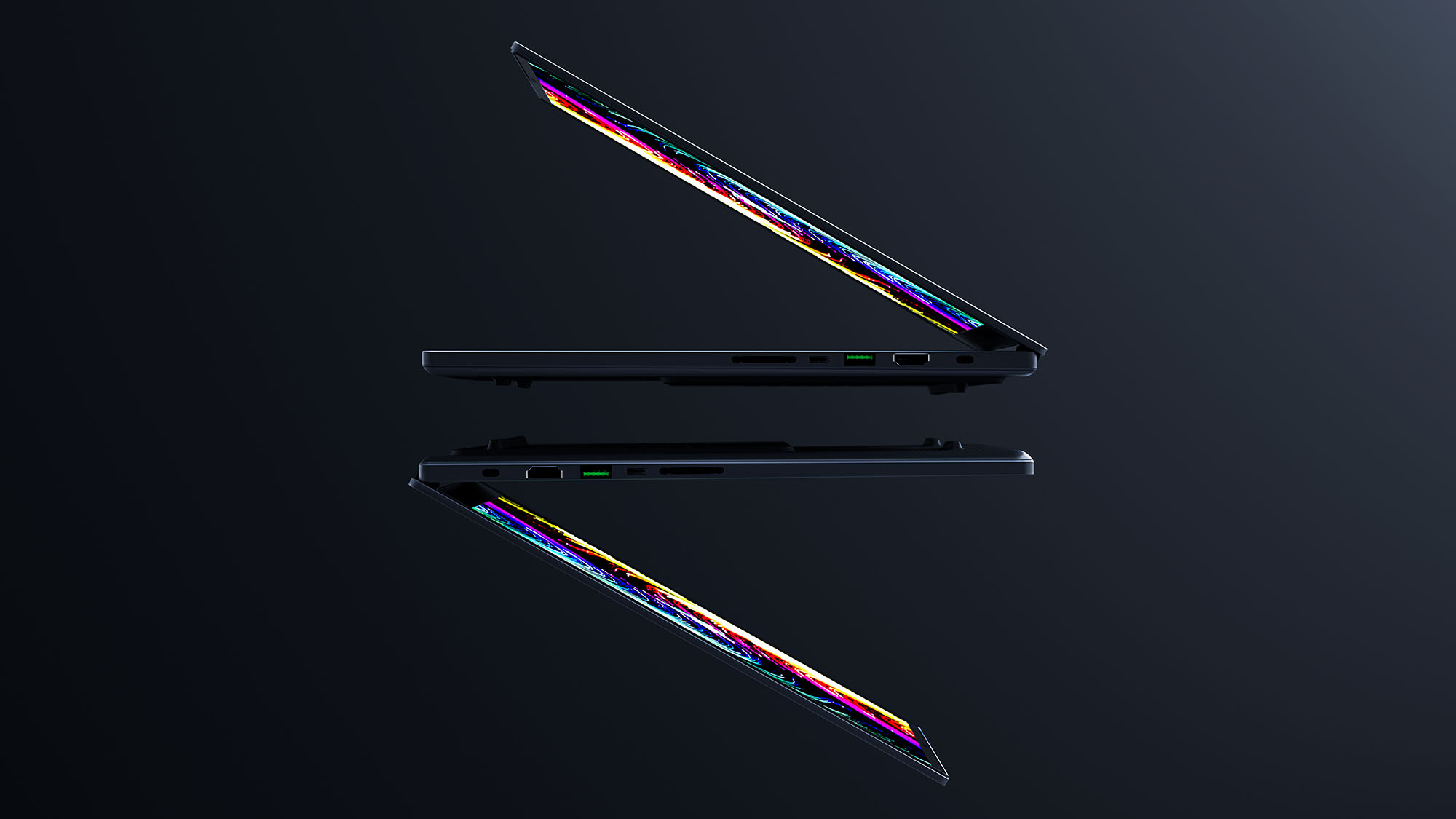When it comes to high-end portable PC gaming, there isn’t a better example than Razer’s Blade line of laptops. They’re ultra-thin, have a sleek all-black design with those signature green highlights, and have a gorgeous screen that’s respectable in functionality and performs as hard as other gaming laptops twice its size.
Then again, anyone paying in the $5,000 range for the best configuration and around $2,000 for the base options knows what to expect.
During CES 2025, the Irvine, California and Singapore-based hardware manufacturing company announced a refresh of the Blade 16, though it’s more than just a spec upgrade.
The new Blade 16 now significantly thinner and lighter than the last iteration, more powerful thanks to new AMD and Nvidia hardware, and offers some AI capabilities too.
Out of the gate, Razer has called the redesign the thinnest gaming laptop ever with a chassis that’s up to 32% thinner than its predecessor.
That was noticeable when a Razer PR rep had me hold last year’s version of the Blade 16 with the Blade 16 2025 (which doesn’t have a set price or release date yet).
That signature unibody chassis is precision-milled from a single block of aluminum and anodized for durability. The rep for Razer also mentioned that the bottom has an indent to help with cooling on top of the bespoke vapor chamber solution to keep the laptop at the right temperature.
Ensuring an enhanced typing experience, improvements have been made to the keyboard with an upped travel distance of 1.5mm.

For the screen, the Blade 16 features a 16-inch QHD+ OLED display that offers an impressive 240Hz refresh rate and 0.2ms response time. Whatever games you plan on playing on this laptop, you’ll get fantastic performance thanks to the laptop version of Nvidia’s recently announced GeForce RTX 5090 GPU.
This means that alongside gaining a 27% power boost over the 4090 mobile chip, Blade 16 (2025) owners will get the latest iteration of its AI super resolution upscaling technology through DLSS 4. Users can even gain access to Nvidia’s NIM microservices for building AI assistants and workflows, if that’s something you want to mess around with.
In the most radical design change, Razer will be moving away from Intel processors and will launch with the AMD Ryzen AI 9 HX 370 CPU.
Though we weren’t able to actual try out the laptop, one of the video loops running on the device was Indiana Jones & The Great Circle which is currently considered a visual benchmark in gaming that will cripple PCs that don’t have adequate components.

Despite not being able to see how games work on the laptop, everything about the new Blade 16 shows Razer is heading in the right direction from what we saw.
The design feels more portable than ever while the spec sheet shows that it could potentially be a performance powerhouse. As mentioned previously, there’s no price point but if history has anything to say, it’ll be expensive. The real question is whether it’ll ultimately be worth the upgrade.

